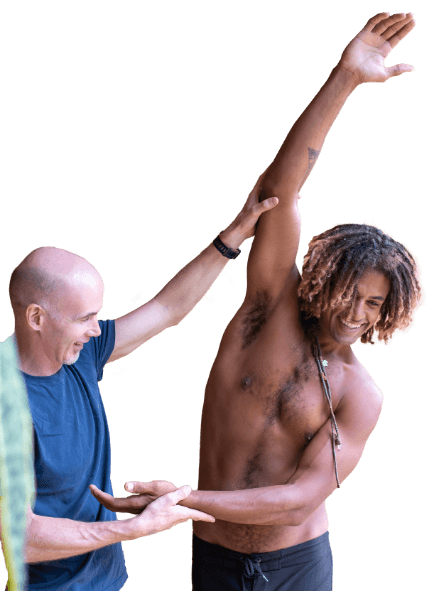
Back pain affects millions of people worldwide. Unfortunately, the causes vary, as do the treatments. If there were one way of fixing back pain, we’d all be using it. However, some great minds are working on this and trying to find the most effective, i.e., what works for most people most of the time.
This post explores three science-backed exercises recommended by Dr. Stu McGill, a back pain expert with over 20 years of experience that can help you reclaim your well-being.
Forget Weak Muscles: The Power of Core Stability
Dr. McGill challenges the common misconception that weak back muscles are the root of all back pain. Even Olympic athletes, with their impressive strength, can experience back pain. He emphasizes core stability, focusing on fine motor control and stiffness in the back as crucial factors for managing and preventing pain.
Building Stiffness, But Not the Bad Kind
Don’t be scared of “stiffness” in this context. It’s not about rigidity but about controlled tension. By practicing specific exercises that engage the muscles, you gain better control over your vertebral segments, reducing the risk of awkward movements that can irritate your back. However, remember that a balanced approach is vital. Tight hips and upper back can contribute to lower back strain, so keeping mobility in these areas is essential. You can check out my YouTube channel or these blog posts for tips on keeping these areas mobile.
Upper Back
Move it or Lose it: Why Staying Active Matters.
Sedentary lifestyles are the enemy of back health. Inactivity weakens muscles and coordination, perpetuating a cycle of weakness and pain. Movement is your friend; even gentle exercise can boost muscle strength and well-being. So, get up, get moving, and feel the difference!
The Curl Up: Engaging Your Core for Control
This first exercise is all about activating those core muscles. Lie on your back with one knee bent and hands on your lower back. Lift your head a few inches off the ground for 10 seconds, avoiding flattening your spine. Breathe sharply to engage your core. Start with 8-10 repetitions, gradually decreasing in subsequent sets because you train the nervous system that tires rapidly.
The SidePlank: Building Strength From the Ground Up
This classic exercise comes in two variations recommended by Dr. McGill. The side plank challenges your core and obliques. Lie on your side, elbow under your shoulder, free hand on your hip, and raise your hips so your weight is on the outside of the lower foot and your elbow. Try 30 seconds on each side.
If that is challenging, then you can bend your knees and have the weight on your knee and elbow. Hold for 10 seconds on each side, progressing to a straight-legged variation for an extra burn.
The Bird Dog: Unleash Your Inner Hunter
This exercise targets both the core and spinal muscles. Start on all fours with a neutral back. Kick one leg out behind you and extend the opposite arm forward, keeping your back flat. Hold for 10 seconds, controlling your pelvic movements with your core. Repeat ten times on each side, gradually reducing repetitions as you gain strength.
Finding Your Path to Relief: Beyond These Exercises
While these exercises are proven to be effective for many, remember everyone’s body is unique. If they don’t work for you, explore other options like the Alexander Technique or yoga. These exercises would constitute the beginning of a back pain program, and eventually, you would need to utilize the newfound strength and stiffness in more functional upright exercises. These could be things like a rotational ‘wood chop’ or squats. Find what resonates with you and consult a healthcare professional for personalized guidance if you can’t beat the pain yourself.
Conclusion: Take Control of Your Back, Take Control of Your Life
While treating clients with back pain, I’ve seen it rule people’s lives. But it doesn’t have to. By incorporating these science-backed exercises, promoting core stability, and listening to your body, you can find relief, improve your well-being, and get back to doing what you love. Remember, start slow, gradually increase intensity, and don’t hesitate to seek professional help if needed.

Over the last 10 years Ed has been building a YouTube library to help people manage their own pain or movement limitations and increase performance through exercise. He regularly adds videos so be sure to subscribe and visit regularly


"Oh My Gosh- I am ALREADY feeling relief after a few days! I used to wake up 2-3 times a night with shooting pain that anti inflammatories couldn't touch. Now I have been waking up just because I want to notice what it feels like to lay in bed pain free- THANK YOU!."

"When I first started with your program I was experience a lot of pain. Walking was difficult. I had to stop and catch my breath every few minutes and lean against a wall for support. Now when I walk with my husband we go for over an hour. I never had to sit down and stop...and, hardly any pain!!! 😊😊 I can’t thank you enough."
Frustrated that you aren't recovering fast enough?
Discover how to heal from illness and injury using movement, food and lifestyle.